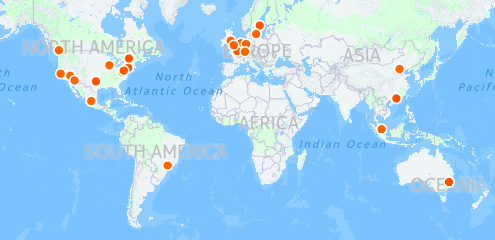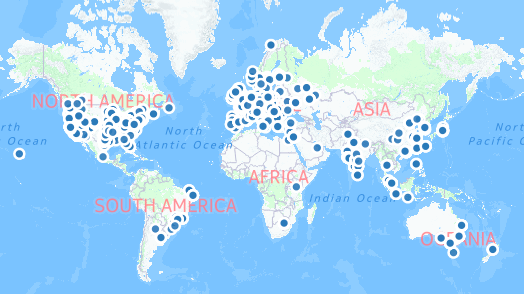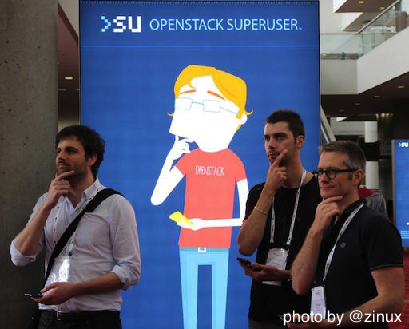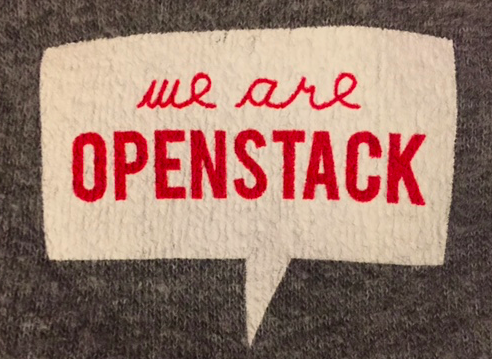The Starship Enterprise had a five-year mission, to "explore strange new worlds," among other things, and as we approach the five-year mark in our own mission, it’s fun to think about the worlds we’ve seen and contemplate where to go next. Did anyone think we’d have a nonprofit foundation in year three, with VMware joining right after we started it? Strange new worlds, indeed.
So, what exactly is our mission?
“To produce the ubiquitous Open Source Cloud Computing platform that will meet the needs of public and private clouds regardless of size, by being simple to implement and massively scalable.”
When you put this in the context of what Jonathan Bryce has called the “software defined economy” it’s clear that a mission which seeks to be a part of every industry’s transformation is a very bold one indeed.
We wrote that mission statement five years ago. Fast forward to today, and we have thousands of developers producing millions of lines of code on a six-month cadence, all coming together with users and the entire ecosystem twice a year at our Summits to plan future releases.
There are dozens of OpenStack public clouds available all over the world:

On the private cloud side, there are hundreds, if not thousands, across the globe. OpenStack is now the defacto standard for anyone building a private cloud today:

Companies like Walmart are using OpenStack at scale on over 100,000 cores to power their infrastructure, helping them [support a record setting Black Friday by serving 1.5 billion page views with 100% uptime]( https://twitter.com/NMarkwith/status/573246851337478144).
When it comes to making an impact, we believed at the time that our mission was bold enough to power multi-billion dollar businesses. With the largest company in the world now using OpenStack, and every industry on the planet embracing software defined everything, it turns out we might have been setting our sights too low. Some even say the NFV and IoT opportunities could reach into the trillions, all relying on automated infrastructure where OpenStack has an opportunity to shine.
So where should we go next?
Plot a course for the center of the galaxy

One of the most common things I hear from users is to “make the core solid,” which means focusing on stability, reliability, upgradeability, and scalability for the critical components they rely on to automate base compute, storage and networking.
When you actually examine any OpenStack cloud, you usually find the same set of components at the center. I like to call them “Nova and friends” [1]. These are the true center of gravity in any OpenStack powered cloud, regardless if users also choose to operate other components on top, like Trove for database automation or Sahara for big data analytics. Is it any wonder users want us to make that center as solid as possible?
As a community, we should see clearly that these projects are our center of gravity, too. Recognizing this reality does not diminish the prospects for the surrounding projects. On the contrary, as our galaxy continues to expand, a strong and stable center benefits everything orbiting around it. Trove relies on Nova, as does Sahara, and many others as you look farther out into our galaxy. Did I mention that Walmart relies on Nova, too?
In practical terms, it’s time to rethink how we organize projects into one list which today we call the "integrated release". This is a rather binary (in or out) concept, and fails to capture the real world nuances of the choices underlying the clouds we see in production today. Thierry wrote a good primer on the topic, but the TL;DR version is that the “integrated release” concept has now outlived its usefulness.
One consequence of continuing to rely on this outdated concept, with it’s ever expanding list of things, is that many users feel we’ve lost site of our prime directive. By refocusing on what lies at the center — the essential compute, storage, and networking building blocks of any cloud — we can reassure users that we are listening, and ultimately make the whole ecosystem of projects that surround it more successful.
Recognizing our Stackforge Stars

If we take the galaxy metaphor to its logical conclusion, we see that not only has the gravity been increasing at the center, but the activity around it has been exploding with activity! While some still ponder the mysteries of magnetism, every day we learn just how much activity a galaxy with a strong center of gravity can attract.
This is exactly what’s happened for the past few years, with many of those projects hosted on stackforge. Projects like Magnum, designed to enable "containers as a service," or Murano, which provides an app catalog to ease the deployment of new tools like Kubernetes, all leverage key components like Heat, Glance, Keystone, and of course Nova. These are all projects responding to real user needs, and should not be ignored.
As we move away from the binary concept of the integrated release, we have an opportunity to actually be more inclusive in our support for efforts like these, which are built the "OpenStack Way" and which further our overall mission. The technical committee is still defining what the criteria will look like for projects to be officially recognized, and I encourage you to get involved if this is something you’re passionate about.
To avoid overwhelming our user community with so many optional components to choose from with varying degrees of maturity, we’re implementing a tagging system to convey deeper meaning about the state of each project. In fact, the technical and user communities are working on the details of this today at the mid-cycle ops meet up in Philadelphia.
As a community that believes in open design, project code is available from the very first hack. This can be confusing to users if we don’t give them context, so my hope is that tagging gives us a method to convey deeper meaning, avoiding sending users down a path that’s not yet ready for them.
On the other end of the spectrum, we have an opportunity to define a "base compute" tag that specifies the essential I call "Nova and friends"[1] at the center of so many clouds today.
Wrapping up
In 2015, we acknowledge that five years into our mission, we’ve created a galaxy with a strong center of gravity, while also recognizing that there is life farther out that’s not so alien after all.
By seeing the picture more clearly, we can better serve our users while continuing to explore strange new markets like NFV, IoT and the exciting world of containers, all powered by one single core that solves the essential problems of compute, storage, and networking that have never been more important.
As we continue to ponder the existential question "What is OpenStack"…

…some will say it’s the technology at the center, while others will point to the large and growing group of people working passionately to advance our mission from the wider community. I see it as both, because the shocking secret is this: OpenStack is made of people.

Here’s to going boldly for the next five years, OpenStack.
Mark Collier
@sparkycollier
[1] I intentionally didn’t spell out exactly who Nova’s friends were, as this gets into a level of detail that’s still being worked out. This is a forward looking post, hence we don’t have all of the answers yet 🙂 Ask yourself what projects are required to run Nova and you’ll have a good idea. Get involved in the discussion by following the TC, dev, and ops mailing lists.
Photo: Spiral Galaxy M66 by hubble-heritage // CC BY-SA
- Contributing to Open Infrastructure: Everybody Wins, So Let’s Get Started - August 3, 2020
- Come meet the users changing the world with OpenStack - October 30, 2017
- Collaboration and code beat hype and ego every time - September 12, 2017

)







